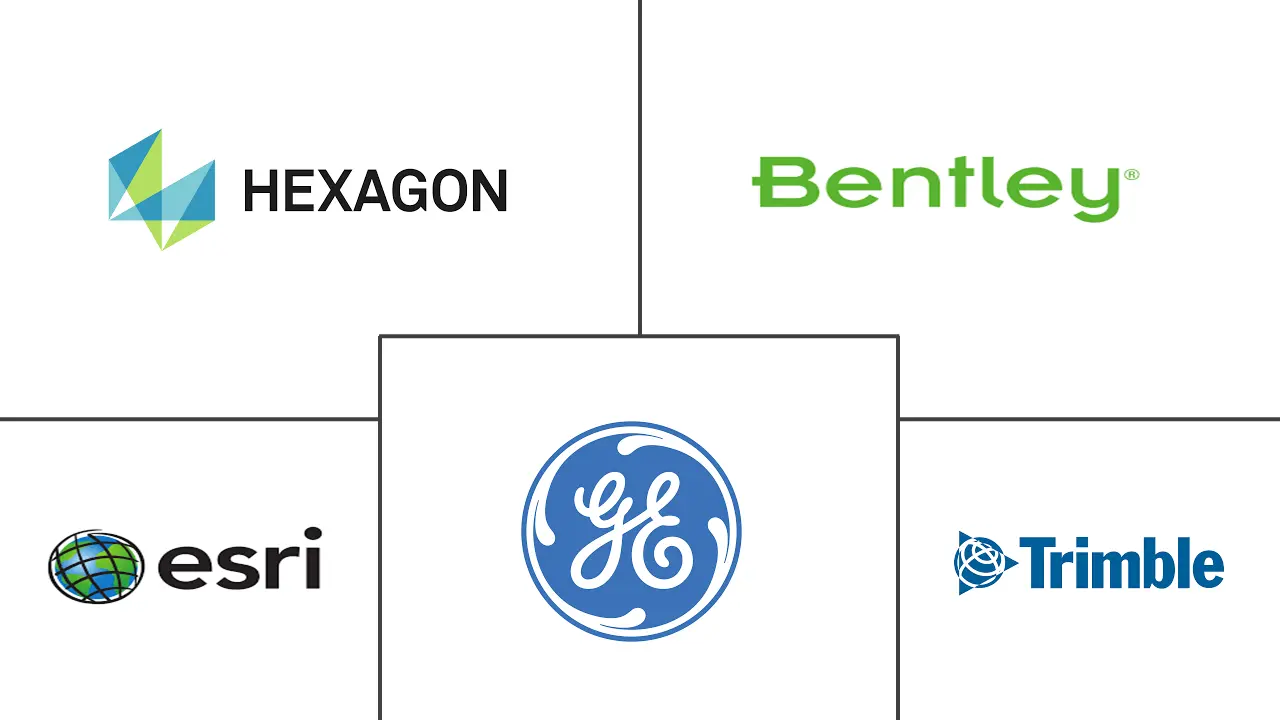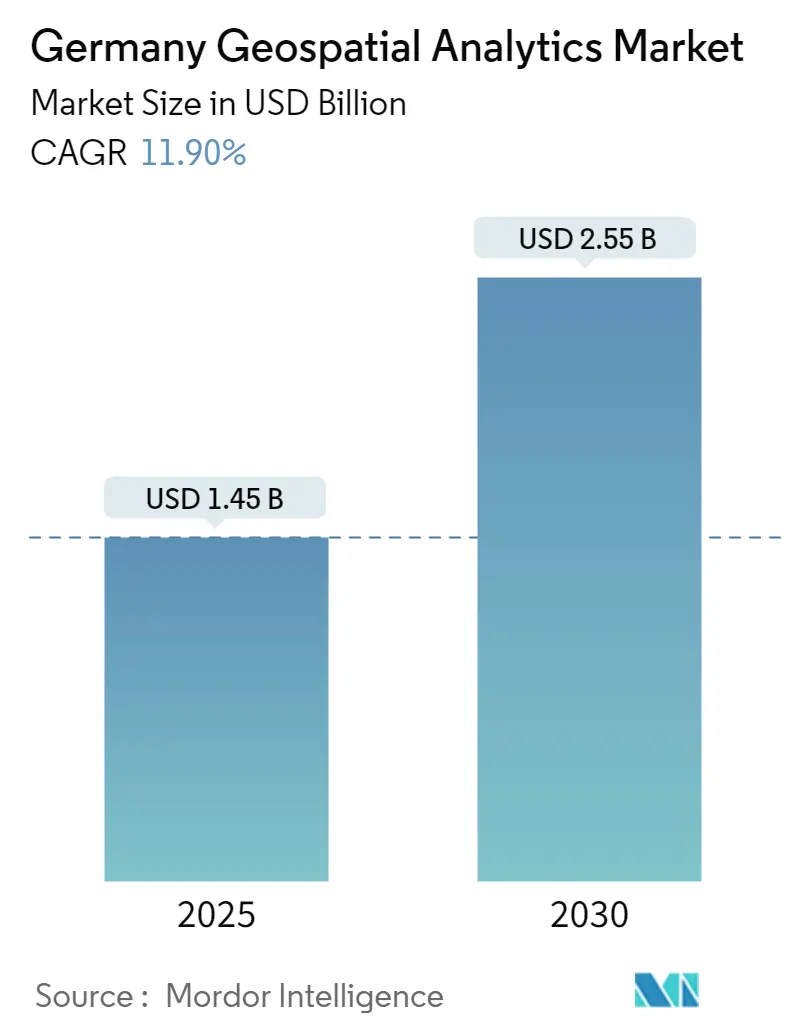
Germany Geospatial Analytics Market Analysis
The Germany Geospatial Analytics Market size is estimated at USD 1.45 billion in 2025, and is expected to reach USD 2.55 billion by 2030, at a CAGR of 11.9% during the forecast period (2025-2030).
Deep learning, Artificial intelligence (AI), and machine learning (ML) are the following three technology trends that will significantly impact the geospatial business in Germany. Since Europe has one of the largest Earth Observation (EO) programs, organizations are quickly embracing these technologies for data processing and analytics. EO is altering how data will influence how individuals live their lives.
- The changing role of national geospatial institutions as they move from only supplying data to delivering knowledge is one of the leading market drivers of the German geospatial sector. For instance, federal geospatial agencies are promoting the creation of National Digital Twins in nations like the Netherlands, Germany, and Sweden in coordination with other governmental departments.
- Improved workflow integration across new vertical domains is another driver. The goal is to provide end-to-end services rather than using items or technology in isolation. This encourages even more cooperation and agreements between governments, non-geospatial industries, and the geospatial industry. For instance, many utility firms collaborate and partner to help build digital twins of the utility or subterranean infrastructure.
- Implementing new technology brings new challenges that may involve privacy-related concerns, as in the case of GIS and other mapping technologies. There have been several instances where gathering geospatial data earned the wrath of regional privacy and demographics laws.
- Ideally, new technologies need to be embraced and integrated into the social discourse to enable end users to gain benefits. However, certain governmental agencies have been very cautious about the 'democratization' of data, specifically in the case of sensitive installations. Societal responses to privacy issues that have come up because of the integration of GIS and GPS have primarily been mixed. However, there has also been an overriding sense of optimism over the benefits geospatial data offers.
Germany Geospatial Analytics Market Trends
Rollout of 5G will Boost Market Growth
- 5G will accelerate the digital transition by combining Big Data and Cloud, virtualization and augmentation, automation and intelligent machines, distributed computing, and artificial intelligence to derive insights from data generated by billions of connected devices. Its ubiquitous connectivity, low latency, and great capacity will provide organizations with an innovation platform to help develop new revenue prospects by exploiting that data and enabling entirely new experiences.
- In the 5G era, geospatial systems and data are more critical than ever for network architecture and service delivery. 5G systems, if deployed in millimeter wave bands, will necessitate highly accurate geographical data and dense concentrations of network infrastructure. 5G is set to revolutionize telecommunications and networking. It also generates innovations in various fields, unlocking significant economic value and transforming societies.
- According to the latest statistics from the Federal Network Agency, around 85 percent of Germany is currently covered by 5G networks. In the city-states of Berlin, Hamburg, and Bremen, there is virtually full coverage, while in the territorial states, the figures are lower. Baden-Württemberg, Hesse, Rhineland-Palatinate, and Thuringia have the lowest rollout rates, at just under 80 percent. Deutsche Telekom recently said its 5G network already reaches 94% of the overall population in Germany. During 2022, Germany's largest operators focussed on expanding their 5G networks, with some already offering coverage to more than 80% of the country's population.
- Market participants work together to improve customer service and expand their market position. For example, Mapbox, a well-known mapping and location cloud platform for developers, and Ookla, the renowned firm that created Speedtest and Downdetector, have collaborated on groundbreaking network-aware mapping solutions. Technologies that provide considerable added value to the customers of each organization will be developed collaboratively. Due to their combined strengths and expertise, Ookla and Mapbox are well-positioned to transform connectivity-aware mapping features and geospatial network research.
- According to the latest statistics from the Federal Network Agency, around 85 percent of Germany is currently covered by 5G networks. In the city-states of Berlin, Hamburg, and Bremen, there is virtually full coverage, while in the territorial states, the figures are lower. Baden-Württemberg, Hesse, Rhineland-Palatinate, and Thuringia have the lowest rollout rates, at just under 80 percent. Deutsche Telekom recently said its 5G network already reaches 94% of the overall population in Germany. During 2022, Germany's largest operators have been focusing on expanding their 5G networks, with some already offering coverage to more than 80% of the country's population.
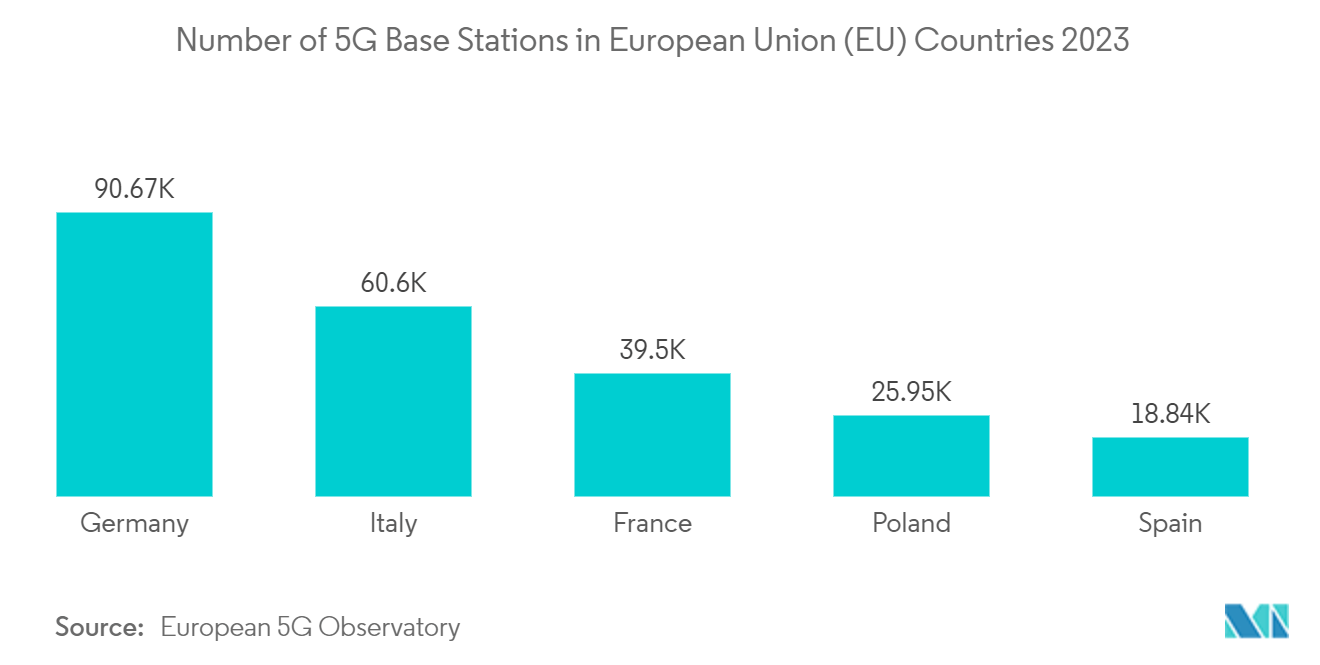
Automotive and Transportation is Expected to Hold Significant Share of the Market
- Transportation has evolved dramatically in recent years due to the emergence of self-driving automobiles and the Internet of Things. These technologies can transform and make transport more efficient, safe, and environmentally friendly. Geospatial technology, which provides real-time data on traffic conditions, road infrastructure, and vehicle movement, is crucial. This data can be used to optimize routes, minimize traffic congestion, and increase road safety.
- On Feb 2023, Mercedes-Benz and Google established a long-term strategic agreement to accelerate automotive innovation and develop the industry's next-generation digital luxury automobile experience. Due to this collaboration, Mercedes-Benz will be the first automaker to create its own branded navigation experience based on new in-car data and navigation capabilities from the Google Maps Platform. This collaboration will provide the premium automaker access to Google's top geospatial solution, which includes extensive location information, real-time and predictive traffic data, automatic rerouting, and more.
- Also, Mercedes-Benz has chosen Capgemini to collaborate in creating and maintaining a Big Data platform for Automated Driving. The platform optimizes AI technologies for automatic driving by processing massively scalable data. The platform enables data-driven development, testing, and validation of automakers' Advanced Driver Assistance Systems (ADAS). Capgemini will also provide 24/7 technical support for the big data platform as part of the expanded deal to ensure optimal uptime for the OEM's R&D facilities worldwide. Capgemini was picked for its expertise in automotive information technology systems, data-driven software, cloud computing, and Intelligent Industry solutions.
- During a recent media roundtable in Bangkok, HERE Technologies announced that VinFast, Vietnam's premier maker of premium automobiles, will integrate the HERE ISA Map into the VinFast VF 8 and VF 9 electric sport utility vehicles (SUVs) for European markets. For context, ISA is an in-vehicle driver assistance function that aims to reduce the number of road accidents and traffic fatalities. It advises drivers of a road's speed restriction and warns them if they violate it. From July 2024, automakers must equip every new vehicle sold in the EU with ISA functionality. However, the HERE ISA Map will be available in Europe in the second half of 2022 in the VinFast VF 8 and VF 9 electric SUVs.
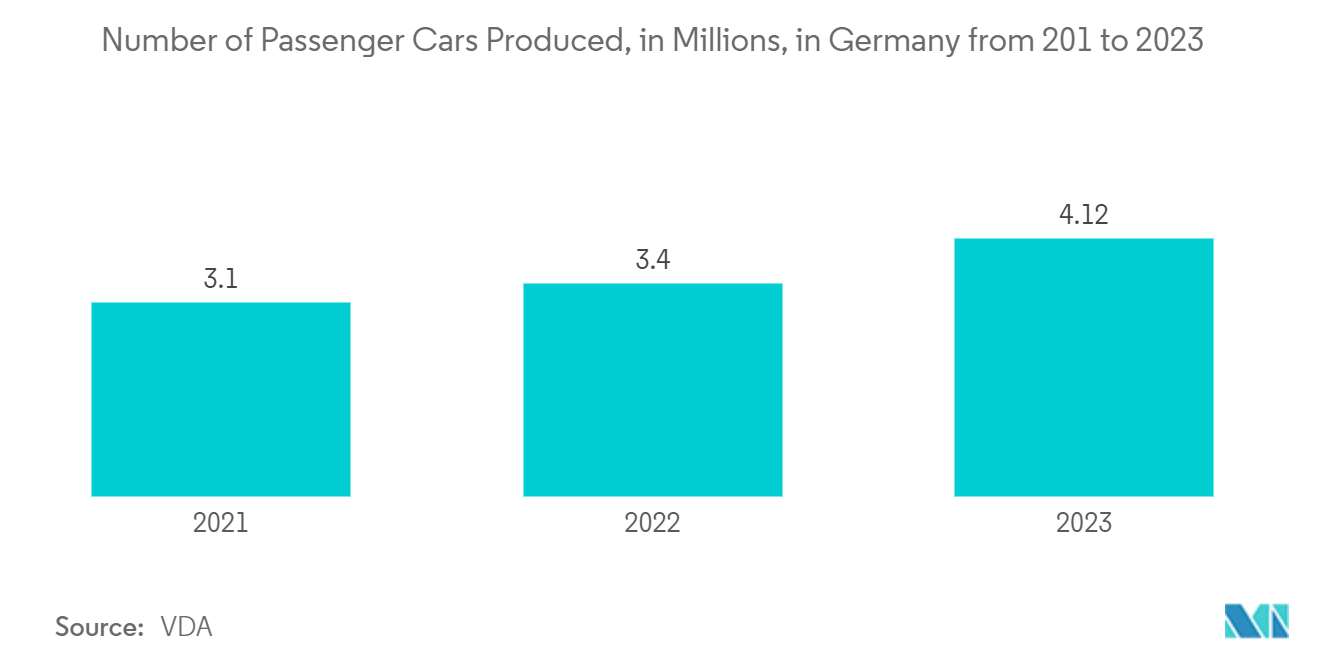
Germany Geospatial Analytics Industry Overview
The German geospatial analytics market is moderately consolidated with the presence of several players like Hexagon, Trimble, Bentley Systems, Inc., General Electric, ESRI Inc., etc. The companies continuously invest in strategic partnerships and product developments to gain substantial market share. Some of the recent developments in the Market are:\
In March 2023, UP42 and Vexcel Collaborate to Provide High-Resolution and Accurate Data in 30+ Countries for Utility, AEC, Energy, Insurance, and Telecoms Applications and to Expand Aerial Imagery and Geospatial Data Portfolio on the Market.
In October 2022, with the release of the UP42 ArcGIS Pro Add-in, UP42 announced cooperation. Users could access UP42 data sets and projects from ArcGIS Pro using the UP42 add-in. ArcGIS Pro from Esri is a standalone application that geospatial solution builders, GIS experts, and developers use to visualize, analyze, compile, and distribute geographic data. Over 160 satellite and aerial picture products, derived data sets, and dozens of processing techniques from top geospatial organizations are currently available in the UP42 marketplace. The UP42 add-in is expected to drastically shorten the time it takes to access data, create visualization workflows, and create geospatial solutions.
Germany Geospatial Analytics Market Leaders
-
Hexagon
-
ESRI Inc
-
Bentley Systems Inc.
-
General Electric
-
Trimble
- *Disclaimer: Major Players sorted in no particular order
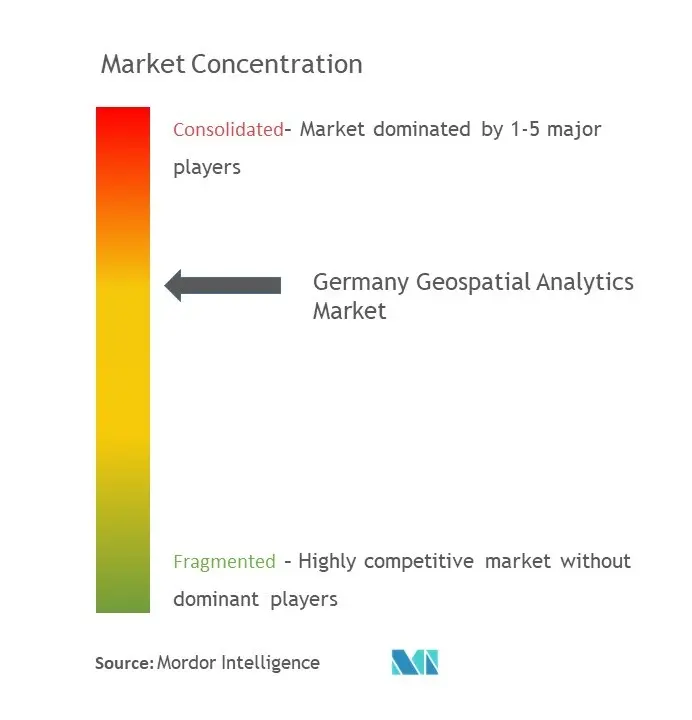
Germany Geospatial Analytics Market News
- November 2023 - Hexagon’s Manufacturing Intelligence branch unveiled Nexus Connected Worker, a collection of manufacturing software solutions that links employees to up-to-the-minute data for informed insights and reporting on operations, maintenance, quality, and audits. The suite offers strong integration with enterprise systems and serves as a hub for digital depictions of assets, processes, and production sites to aid in real-time decision-making.
- October 2023 - Bentley Systems announced that Seequent, a subsidiary of Bentley specializing in subsurface technology, has agreed to purchase Flow State Solutions, a top player in geothermal simulation software. The decision strengthens Seequent's position as the top provider of subsurface software for the geothermal sector.
Germany Geospatial Analytics Industry Segmentation
Geospatial analytics is acquiring, manipulating, and displaying imagery and data from the geographic information system (GIS), such as satellite photos and GPS data. The specific identifiers of a street address and a zip code are used in geospatial data analytics. They are used to create geographic models and data visualizations for more accurate trends modeling and forecasting.
The german geospatial analytics market is segmented by type (surface analysis, network analysis, geovisualization), by end user vertical (agriculture, utility and communication, defence and intelligence, government, mining and natural resources, automotive and transportation, healthcare, real estate, and construction). The market sizes and forecasts are provided in terms of value (USD) for all the above segments.
| By Type | Surface Analysis |
| Network Analysis | |
| Geovisualization | |
| By End-user Vertical | Agriculture |
| Utility and Communication | |
| Defense and Intelligence | |
| Government | |
| Mining and Natural Resources | |
| Automotive and Transportation | |
| Healthcare | |
| Real Estate and Construction | |
| Other End-user Verticals |
Germany Geospatial Analytics Market Research Faqs
How big is the Germany Geospatial Analytics Market?
The Germany Geospatial Analytics Market size is expected to reach USD 1.45 billion in 2025 and grow at a CAGR of 11.90% to reach USD 2.55 billion by 2030.
What is the current Germany Geospatial Analytics Market size?
In 2025, the Germany Geospatial Analytics Market size is expected to reach USD 1.45 billion.
Who are the key players in Germany Geospatial Analytics Market?
Hexagon, ESRI Inc, Bentley Systems Inc., General Electric and Trimble are the major companies operating in the Germany Geospatial Analytics Market.
What years does this Germany Geospatial Analytics Market cover, and what was the market size in 2024?
In 2024, the Germany Geospatial Analytics Market size was estimated at USD 1.28 billion. The report covers the Germany Geospatial Analytics Market historical market size for years: 2019, 2020, 2021, 2022, 2023 and 2024. The report also forecasts the Germany Geospatial Analytics Market size for years: 2025, 2026, 2027, 2028, 2029 and 2030.
Our Best Selling Reports
Germany Geospatial Analytics Industry Report
Statistics for the 2025 Germany Geospatial Analytics market share, size and revenue growth rate, created by Mordor Intelligence™ Industry Reports. Germany Geospatial Analytics analysis includes a market forecast outlook for 2025 to 2030 and historical overview. Get a sample of this industry analysis as a free report PDF download.

